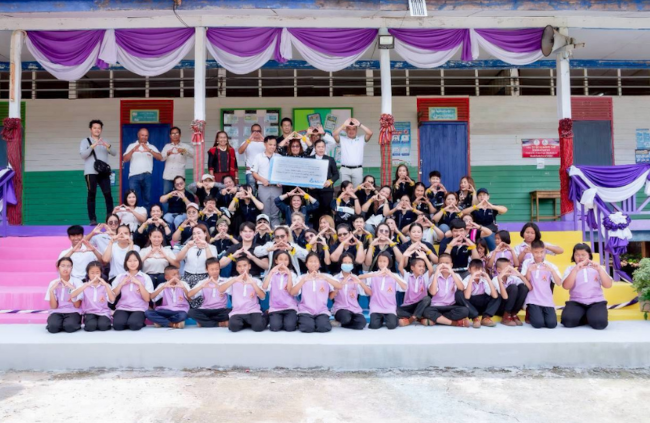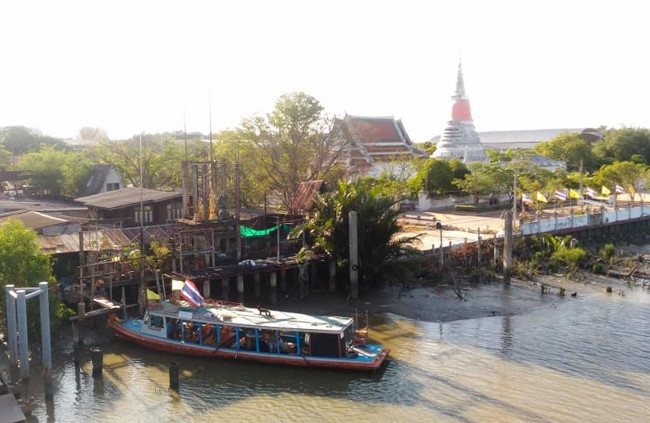Kawhia Moana, Kawhia Kai, Kawhia Tangata (Kawhia the waters, Kawhia the sustenance, Kawhia the people)
By Reece Davis - Published March 18, 2021
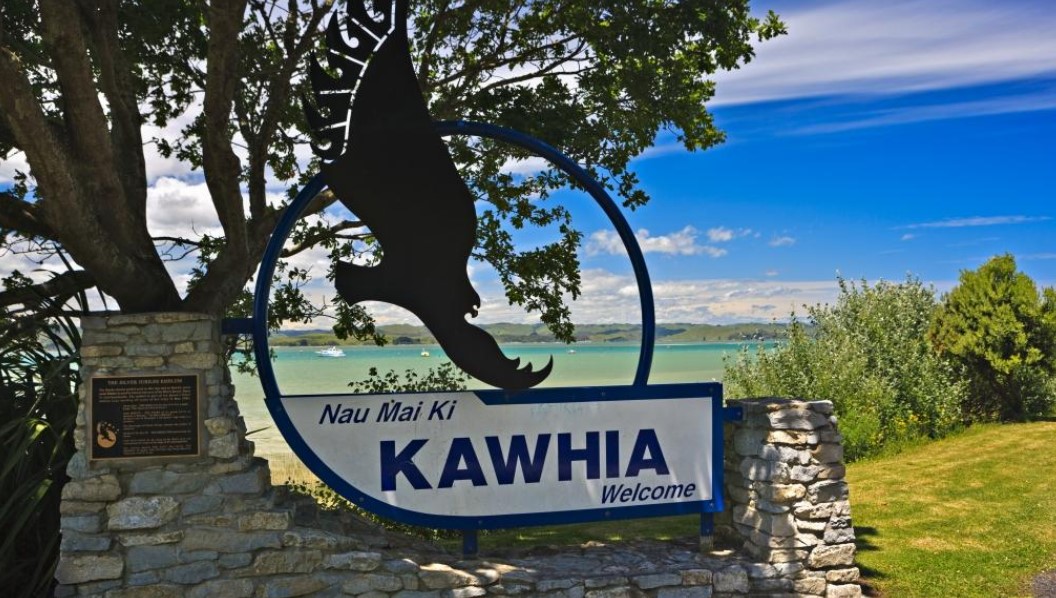 Welcome to Kawhia sign located at the entrance to Kawhia township
Welcome to Kawhia sign located at the entrance to Kawhia township
By Reece Davis, Delta Australia
Charming, unspoiled and laidback are words often used to describe Kawhia, a small seaside settlement steeped in history and tradition where I had the pleasure of growing up in, when dad moved to the town of less than 1000 people in 1981 as Te Awamutu Electric Power Boards resident electrical linesman.
The seaside town is situated around a peaceful harbour, sheltered by sand dunes of black iron sand that burn your feet in summer and cloaked in an old-fashioned ambience that draws many visitors back time after time.
The 600ha Kawhia Harbour is packed with kaimoana (seafood) of pipi, oysters, mussels, cockles and pupu (mud snails) ripe for collecting when the tide is out. Once a year the Kawhia Kai Festival is held and is an opportunity to experience traditional Maori food from the sea (kaimoana) & food from the land (kaiwhenua).
The traditional and contemporary Maori kai includes toroi (marinated mussels and puha), creamed paua and kina, (sea urchin) inanga (whitebait patties), kanga wai/pirau (fermented corn), puha and pork spring rolls, pawhara (smoked fish and eel) as well as the Waikato delicacy, koki (shark liver pate).
The area is also known locally for its good fishing and floundering, while Kawhia’s beaches provide swimming spots and natural hot pools when the tide’s out.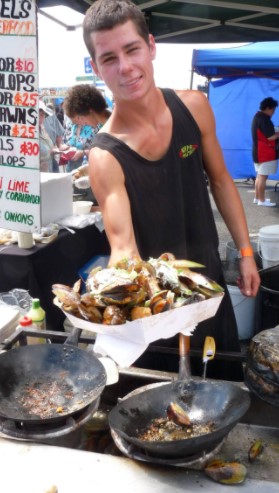 A Stallhold at Kawhia Kai Festival serves up a dish of New Zealand Green Lipped Mussels
A Stallhold at Kawhia Kai Festival serves up a dish of New Zealand Green Lipped Mussels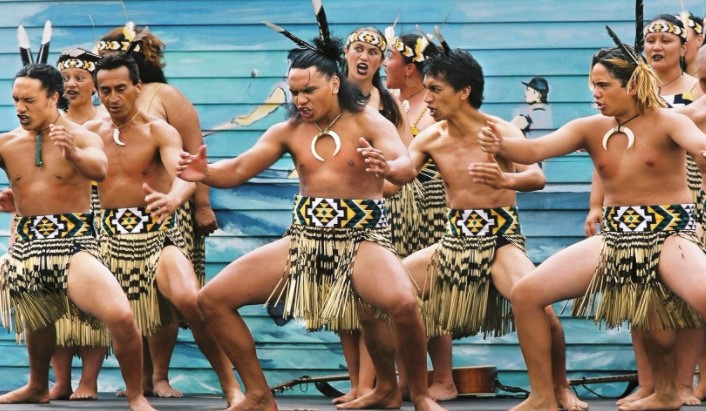 A local Kapa haka (performance group) perform a tranditional haka (war dance) at the Kawhia Kai Festival
A local Kapa haka (performance group) perform a tranditional haka (war dance) at the Kawhia Kai Festival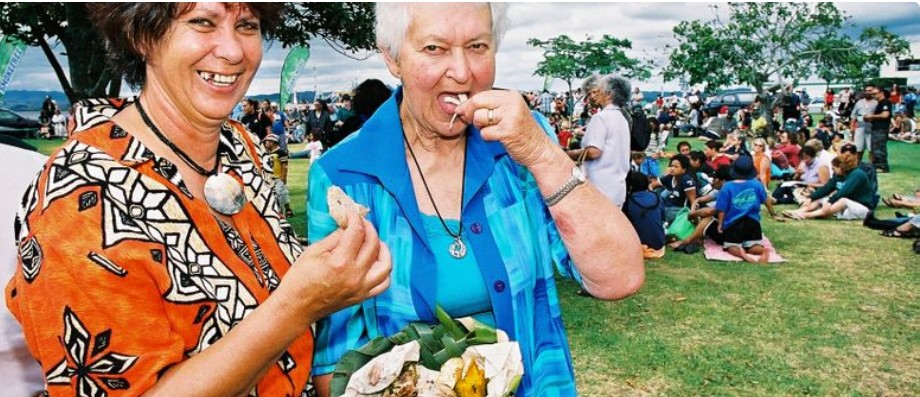 Local Kaumatua (elderly) enjoy a Maori traditional meal of hangi (ground oven steamed food)
Local Kaumatua (elderly) enjoy a Maori traditional meal of hangi (ground oven steamed food)
Four kilometres from the town centre located on the black iron sand of Ocean Beach is Te Puia Hot Spring, which has natural geothermal water of 45ºC which reveals itself 2 hours on either side of low tide. They are located by digging your toes into the sand at the low tide mark until you feel hot water, it may take you several attempts to find a spot where the water is not too cool and not too hot. As soon as you find the perfect spot use a shovel to dig your hot pool.
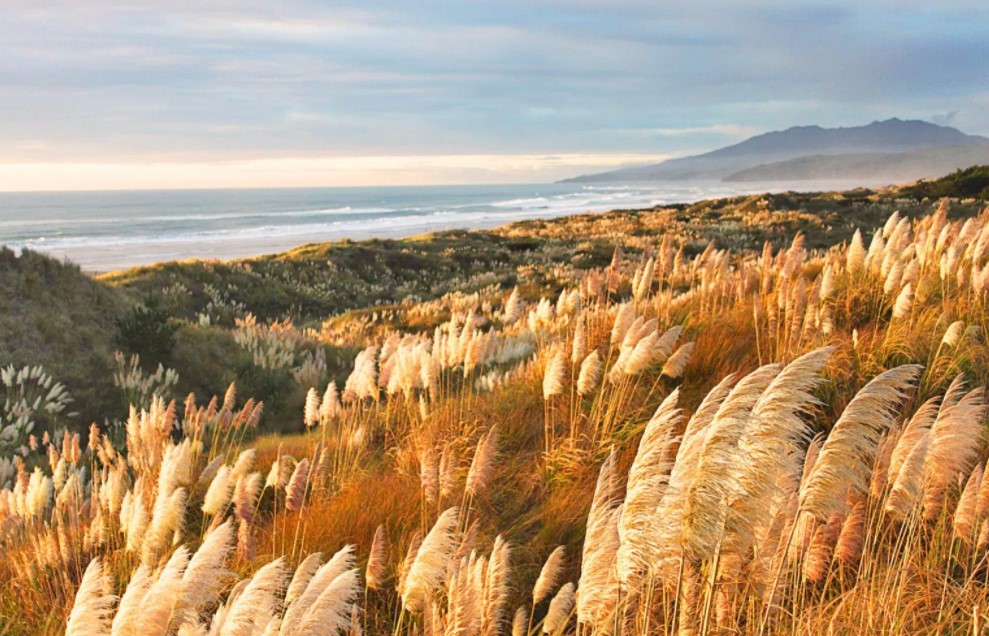 A view through the toitoi (pampas grass) towards Mt Karioi from Ocean Beach Kawhia
A view through the toitoi (pampas grass) towards Mt Karioi from Ocean Beach Kawhia Kawhia Locals enjoy a soak in the thermal hot pools at Te Puia Hot Springs
Kawhia Locals enjoy a soak in the thermal hot pools at Te Puia Hot Springs
Kāwhia was the final landing point of the Tainui after its long and arduous journey from Hawaiki in central Polynesia. When the canoe arrived at Kāwhia, it was tied to a pōhutukawa tree named Tangi-te-korowhiti. It was finally pulled ashore at a point called Rangiāhua, and is buried behind the present-day marae of Maketū, near Kāwhia township. Following the Tainui’s arrival the commander, Hoturoa, established a place of learning called Te Ahurei.
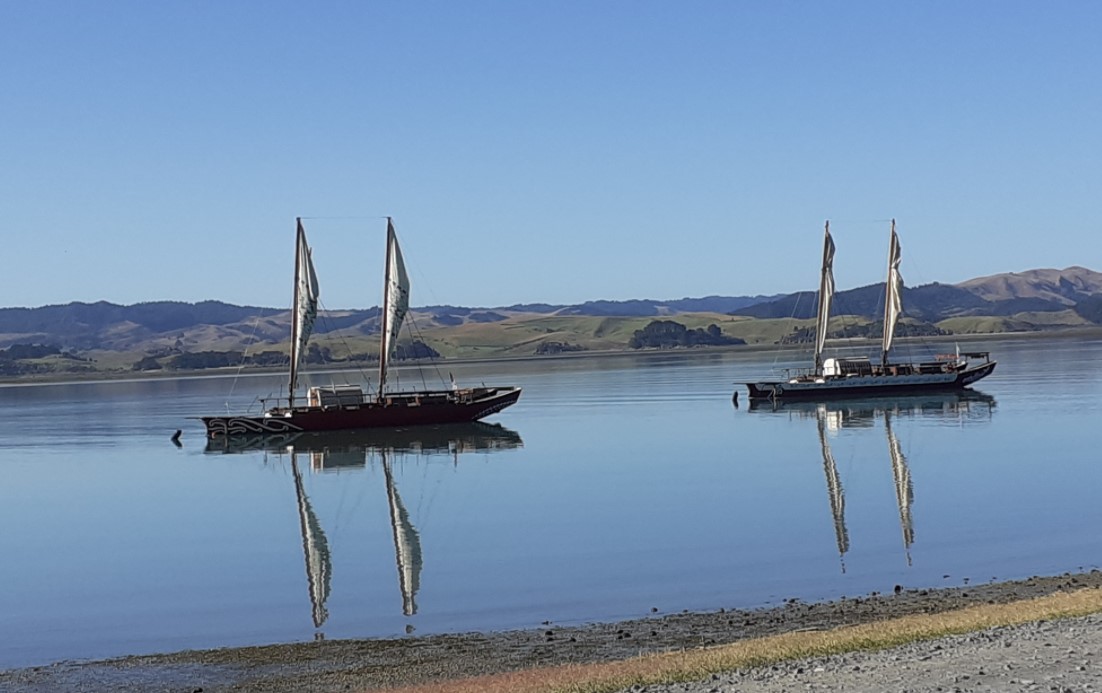 Te Toi Waka Horua (name of the rear boat) anchored in the calm sheltered waters of Kawhia Harbour
Te Toi Waka Horua (name of the rear boat) anchored in the calm sheltered waters of Kawhia Harbour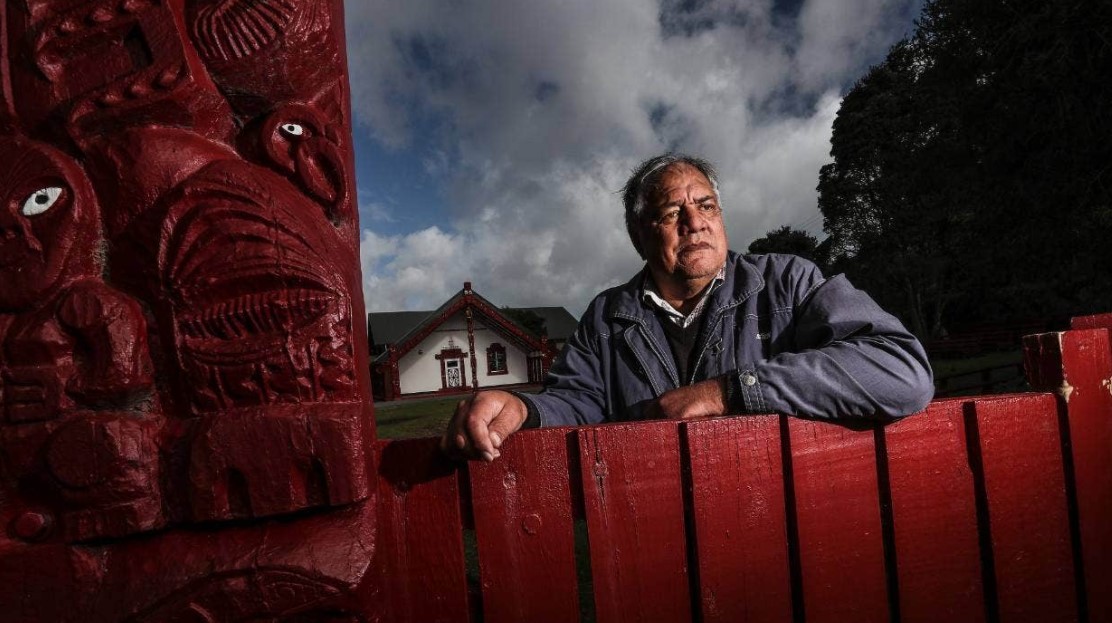 Local Kaumatua (elderly) at the gates of Maketu Marae (Traditional Maori meeting house)
Local Kaumatua (elderly) at the gates of Maketu Marae (Traditional Maori meeting house)
Kawhia also holds a yearly tradition on New Year’s Day of racing 130-year-old whaleboats with settlements surrounding the harbour. It is a competitive and fun occasion for men and women of all ages.
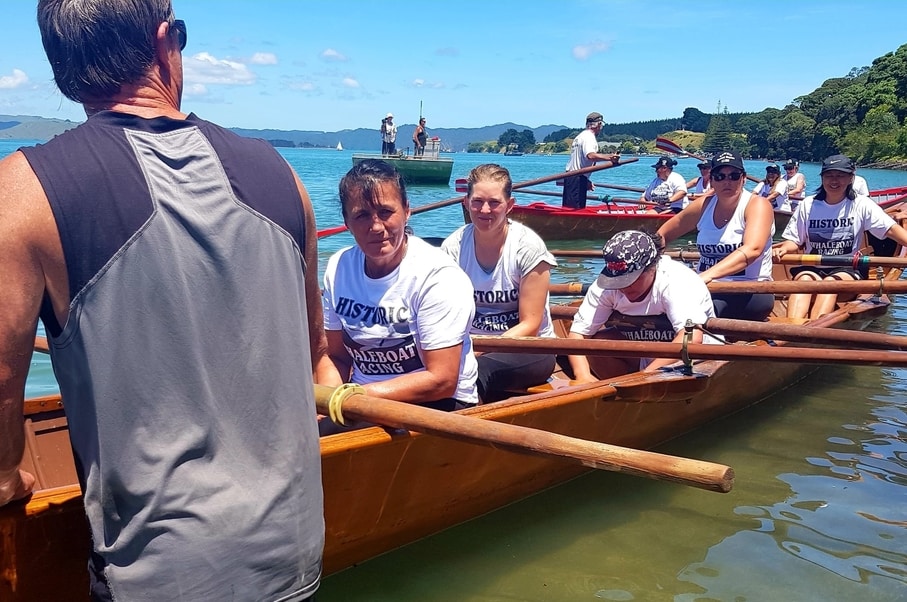 Kawhia women ready to compete in a whaleboat race with competing teams from around Kawhia harbour
Kawhia women ready to compete in a whaleboat race with competing teams from around Kawhia harbour
Kawhia the laid back sleepy town, full of culture, personality and adventure. It is definitely a go to travel destination to experience the best of grassroots New Zealand.




